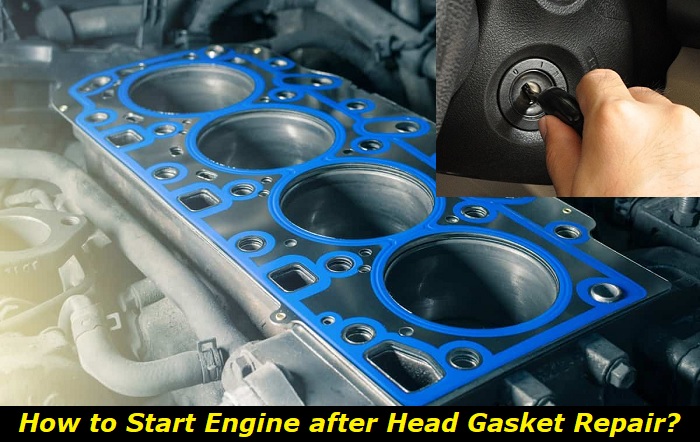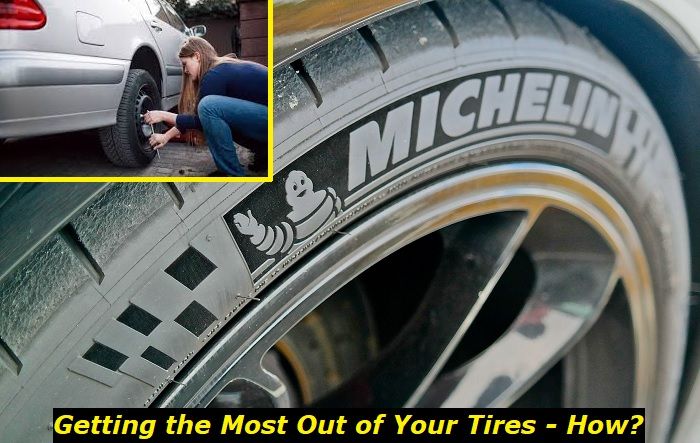Have you just repaired a blown head gasket and don't know how to start the engine after the replacement?
Engine starting mistakes highlights
- Level of urgency:High
- Can you drive?Yes
- DIY inspection:No need to inspect
- DIY repair:No need to repair
- Price for repair:$0
- Common Reasons:Any engine-connected repair
- Ways to fix:Always drive carefully after repairs, know the limitations

What is Head Gasket?
The head gasket is a tiny yet critical component of the engine. It is found between the cylinder head and engine block and seals the internal combustion process to allow oil and engine coolant to move through the engine.
Besides the head gasket allowing oil and coolant circulation by sealing the internal combustion portion of the engine, it also seals the engine's combustion chamber. This enables the engine to produce enough power and keeps harmful byproducts of the combustion chamber from exiting in the wrong direction, directing these harmful gases to the exhaust streams.
In modern vehicles, the head gasket is built with multiple layers of steel entwined with elastomer. This design makes the modern head gasket more reliable and durable. The head gasket keeps the pressure created from spark plugs when they ignite fuel vapors within the combustion chambers. If this pressure leaves the chamber, the pistons will not have enough pressure to keep firing appropriately.
Engine coolant and oil are vital to the normal functioning of the engine. However, if the oil and coolant mix, they cannot perform their duties effectively. The head gasket keeps them separated by separating the chambers.
Before going into the causes of a blown head gasket, let's look at the steps of starting the engine after head gasket repair.
Steps to Start your Engine after Head Gasket Repair
First, check to ensure your coolant is within the safe level for your vehicle. If it's not, fill it up immediately. Also, check for leakages. If there are any, fix them right away. They can cause further damage to the engine.
Once you've checked and confirmed everything is okay, turn on the vehicle and pop the hood. Wear safety gloves to avoid getting burned by hot liquids or metal surfaces. Look around carefully to ensure no flames or sparks around the engine bay. These can set fire to anything while you're working.
Check the water pump and radiator to ensure they are in perfect health. If one of these is a fault, it could cause the engine to overheat.
You should check these things after two days at least, after which you can take your vehicle for a short test drive. After the test drive, check if the above are still in good condition. Are there any leaks or spillages of oil or coolant? If not, your car is ready for normal functioning - it can go for long drives.
You may also want to refer to your manufacturer's head gasket repair manual for more information.
What Causes Head Gasket to Fault
When a head gasket is blown, it could mean a lot of trouble for the engine. Signs of a blown head gasket are easy to identify and should be fixed after they're noticed so that they don't cause more damage to the engine. Head gaskets in modern cars are potent and can run over 100,000 miles. However, one of these conditions could lead to the premature death of this vital engine component.
- Engine Overheating
One of the primary causes of a faulty head gasket is overheating engine. When the engine produces too much heat, it exposes the head gasket to extreme temperatures outside the range it's designed to handle, causing it to fail.
Besides the head gasket, too much heat is also dangerous to the engine block and cylinder heads. It causes them to warp or crack, preventing the head gasket from sealing properly. This also means that if the head gasket was blown by extreme heat, it might not be the only component you will be fixing.
- Pre-Ignition and Detonation
Pre-ignition is the premature combustion of the mixture of air and fuel in an internal combustion engine. Detonation, on the other hand, is the unprompted combustion of the remaining mixture of air and fuel after the normal combustion initiated by the spark plug has taken place.
These two terms are commonly thrown around interchangeably to describe the causes of engine knocking, which can be caused by a malfunctioning head gasket. These two conditions subject the head gasket, pistons, and valves to extreme pressure and heat. Too much heat and pressure are dangerous to the life of the head gasket.
- Sudden Temperature Increase
The head gasket expansion and contradiction depend on the temperature of the engine. But these changes must be gradual to prevent the snapping of the head gasket. If you start the car after parking it for long hours, putting the foot down immediately sends a wave of shock to the head gasket because of the sudden temperature increase.
You should allow your car to build up the temperature to the normal operating levels before accelerating aggressively. This helps prevent the premature demise of the head gasket and prevents other damages to the engine.
- Improper Installation
Even after going through the steps mentioned above, "how to start the engine after head gasket repair," and finding no fault, there could be an improper installation waiting to wreak havoc later. If you ran into trouble after a month or two of a head gasket repair, there might have been an issue with the installation. If the head gasket was improperly replaced, it might not hold the seal long.
- High Mileage
Head gaskets are components that go through the wear and tear process. And irrespective of how carefully you drive, replacing it at some point is inevitable.
A vehicle that has been running for many years without a head gasket repair will likely develop issues. Age makes the components loose, and they can no longer hold as perfectly as they did when new. Depending on the brand you drive, different manufacturers prescribe a head gasket replacement after a specific mileage. If your vehicle has exceeded that limit, the chances of experiencing a blown head gasket are high.
Common Issues after Head Gasket Repair
Head gasket repair is a strenuous task. One slight mistake could have you restarting the entire process. After the job is done, some issues may arise; the common ones are overheating, cylinder head or engine block warping, or a failed timing belt.
Look out for these issues after a head gasket repair job.
- Engine Overheating
It may sound strange for your car to keep overheating even after treating it to a brand-new head gasket. One explanation is that the gasket replacement wasn't done right. To be sure that the head gasket replacement was unsuccessful, check the gasket for leaks.
If you find evidence of coolant or oil leaks, call the mechanic who worked on the job and have them revisit it.
- Cylinder Heads / Engine Block Warping
If you have looked and found no sign of leaking oil or coolant, the head gasket repair job was done right. If the head gasket was blown because of extreme heat, it might have died alongside other components, such as the engine block and cylinder heads. Excess heat causes these components to warp or crack.
Unless you noticed the blown gasket in time, chances are the cylinder head and engine block were also affected. Detecting a blown head gasket early enough can save you a lot of money in repairing other components. It also keeps your engine in perfect health.
To be sure the cylinder head and engine block are warped, look for signs such as white smoke from the exhaust, bubbly milky shake in the oil, and engine overheating. You may also notice bubbles in the radiator and coolant reservoir and dropped coolant levels.
A warped engine block or cylinder head is not necessarily a problem that arises after head gasket repair; if these two are warped or cracked, they already had that problem before the gasket repair.
In Conclusion
The head gasket is a critical part of the engine and can leave you stranded if it malfunctions. Before getting a repair job done on any engine component, it is essential to know what they look like.
If you have the head gasket in your engine replaced, the replacement should have the exact specifications as the original. You should also know what the engine block and cylinder heads look like when they are in good condition.
This is the best way to stay ahead of your mechanic. Not all of them are professional enough, to be honest with you. Some will just be goofing around trying to siphon your accounts for the wrong repairs. Knowing what to look for when you have a blown head gasket is vital.
About the authors
The CarAraC research team is composed of seasoned auto mechanics and automotive industry professionals, including individuals with advanced degrees and certifications in their field. Our team members boast prestigious credentials, reflecting their extensive knowledge and skills. These qualifications include: IMI: Institute of the Motor Industry, ASE-Certified Master Automobile Technicians; Coventry University, Graduate of MA in Automotive Journalism; Politecnico di Torino, Italy, MS Automotive Engineering; Ss. Cyril and Methodius University in Skopje, Mechanical University in Skopje; TOC Automotive College; DHA Suffa University, Department of Mechanical Engineering






Add comment